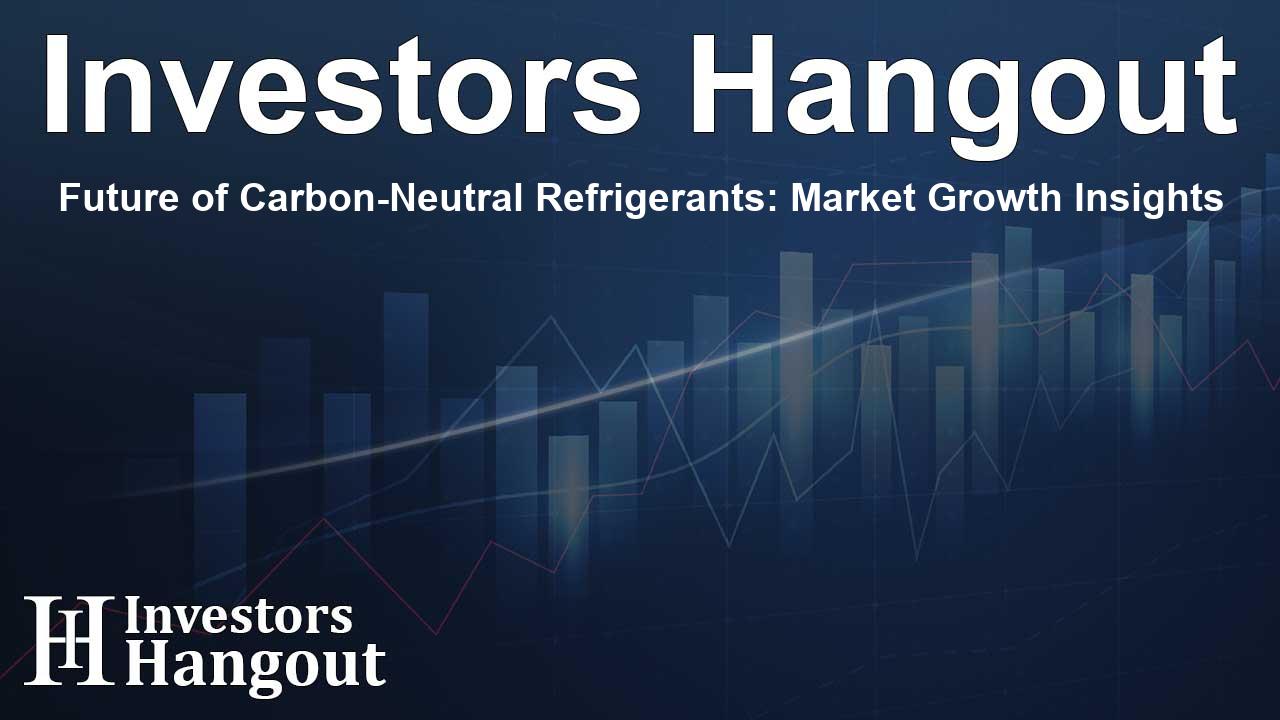Future of Carbon-Neutral Refrigerants: Market Growth Insights

Understanding the Carbon-Neutral Refrigerant Market Growth
The carbon-neutral refrigerant market is carving out a significant niche, indicating a promising future. As environmental concerns surge globally, businesses and governments are compelled to prioritize sustainable practices. This transition is not just a trend; it represents a fundamental shift in the way industries approach refrigerants. The market, valued at USD 4.74 billion, is set to expand dramatically, expected to reach USD 12.96 billion by 2033, with a projected growth rate of 13.43% annually between 2026 and 2033.
Driving Factors Behind Market Expansion
The growth of the carbon-neutral refrigerant market is primarily driven by rising regulatory obligations and the increasing urgency for environmentally sustainable products. As strict laws emerge to curb the use of high global warming potential (GWP) refrigerants, there is a notable demand shift towards low-GWP alternatives. This shift is bolstered by the adoption of hydrofluoroolefins (HFOs), natural refrigerants, and blends, especially in industrial refrigeration and HVAC systems.
The Role of Government and Industry Initiatives
Government actions and corporate environmental strategies are significant contributors to this transformation. Investments in advanced cooling technologies are gaining momentum, encouraging the adoption of energy-efficient systems across various sectors. This, combined with urbanization and advancements in the cold chain, accelerates the demand for carbon-neutral solutions.
Exploring Innovative Technologies in Refrigeration
The promise of innovative technologies is significantly influencing the carbon-neutral refrigerant market. Emerging economies, particularly in Asia, Latin America, and the Middle East, are beginning to see an increase in the adoption of these technologies. As these regions prioritize sustainable practices, the demand for safe and efficient refrigerants continues to rise, providing substantial opportunities for market players.
Market Segmentation and Key Products
Understanding the key segments of the carbon-neutral refrigerant market can provide valuable insights into consumer behavior and preferences. One of the leading segments is natural refrigerants, holding a commendable market share due to their environmentally friendly nature and low GWP. Meanwhile, the HFO segment is witnessing the fastest growth, projected at a remarkable CAGR of 10.50%. These products are increasingly utilized in next-generation air conditioning systems and are favored as industries adhere to new environmental regulations.
Applications and End-User Dynamics
Analyzing the applications within this market reveals the critical roles played by various sectors. Residential refrigeration emerges as a primary application, accounting for a significant market share as households strive for energy efficiency. The air conditioning segment is regarded as the fastest-growing area, propelled by government incentives and the rising need for low-GWP refrigerants amid severe weather conditions.
End-User Trends Shaping Market Potential
In assessing end-users, the food and beverage industry takes the lead, necessitating efficient cooling for storage and transport. The pharmaceutical sector, however, is projected to grow at a notable rate, driven by the demand for temperature-sensitive storage solutions vital for medications and vaccines.
Regional Insights and Market Forecast
Regionally, Europe has dominated the market, reflecting a robust 39.54% share in recent assessments. This is largely attributed to stringent EU regulations governing refrigerants and their emissions. However, the Asia Pacific region is anticipated to witness the most rapid growth over the next few years, supported by significant industrialization and urbanization trends.
Future Considerations and Industry Outlook
As the carbon-neutral refrigerant market continues to evolve, companies are adjusting their strategies to adapt to these changing dynamics. They are increasingly investing in research and development to innovate and meet consumer demand sustainably. This shift not only benefits the environment but also aligns with the corporate goals of key industry players.
Frequently Asked Questions
What is the growth projection for the carbon-neutral refrigerant market?
The market is projected to grow from USD 4.74 billion in 2025 to USD 12.96 billion by 2033, with a CAGR of 13.43%.
Which products dominate the carbon-neutral refrigerant market?
Natural refrigerants currently lead the market, while hydrofluoroolefins (HFOs) are the fastest-growing segment.
What are the key applications driving market demand?
Main applications include residential refrigeration and air conditioning, with increasing demand from the food and beverage and pharmaceutical sectors.
Which regions are leading in market share?
Europe currently holds the largest market share due to strict environmental regulations, while the Asia Pacific is expected to grow the fastest.
How are government regulations impacting the carbon-neutral refrigerant market?
Government regulations are driving the demand for low-GWP refrigerants, encouraging industries to adopt eco-friendly technologies and practices.
About The Author
Contact Caleb Price privately here. Or send an email with ATTN: Caleb Price as the subject to contact@investorshangout.com.
About Investors Hangout
Investors Hangout is a leading online stock forum for financial discussion and learning, offering a wide range of free tools and resources. It draws in traders of all levels, who exchange market knowledge, investigate trading tactics, and keep an eye on industry developments in real time. Featuring financial articles, stock message boards, quotes, charts, company profiles, and live news updates. Through cooperative learning and a wealth of informational resources, it helps users from novices creating their first portfolios to experts honing their techniques. Join Investors Hangout today: https://investorshangout.com/
The content of this article is based on factual, publicly available information and does not represent legal, financial, or investment advice. Investors Hangout does not offer financial advice, and the author is not a licensed financial advisor. Consult a qualified advisor before making any financial or investment decisions based on this article. This article should not be considered advice to purchase, sell, or hold any securities or other investments. If any of the material provided here is inaccurate, please contact us for corrections.
